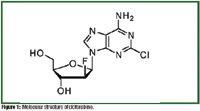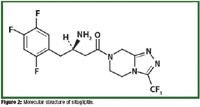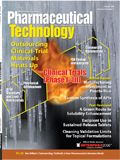Custom Synthesis of APIs
Researchers and process chemists share approaches in synthesis of active ingredients and pharmaceutical intermediates.
As contract manufacturers and pharmaceutical companies gather later this month for Informex in New Orleans, discussions of approaches for the synthesis of active pharmaceutical ingredients (APIs) and intermediates will invariably ensue. A review of several sources, including contract manufacturers, academicians, and recent literature reveals several interesting approaches in API synthesis.

PHOTOS.COM/M.MCEVOY, Structures courtesy of US FOOD AND DRUG ADMINISTRATION
Nucleoside analogs
Nucleoside analogs have provided a rich structural class for the design of novel anticancer and antiviral drugs. "Leustatin" (cladribine) by Ortho Biotech and "Fludara" (fludarabine phosphate), developed by Berlex Oncology and now owned by Bayer Healthcare (Leverkusen, Germany), are two members of that class that were evaluated as potential anticancer agents. "While these were exciting discoveries, there was some initial concern in the discovery community that the glycosidic bond of those agents might prove too labile for ultimate utility in the clinic," explains Stephen Munk, president and CEO of Ash Stevens (Detroit, MI). Ash Stevens is the contract manufacturer of fludarabine phosphate, the API in Fludara. While both of these agents were subsequently approved as drugs by various regulatory agencies, including the USFood and Drug Administration, that concern led scientists at the Southern Research Institute in Birmingham, Alabama, to consider analogs that would retain activity while affording a chemical structure with a glycosidic bond with enhanced stability, says Munk. Those studies led to the discovery by Secrist and Montgomery of a nucleoside analog now known as clofarabine (1).
Clofarabine (see Figure 1) is the API in "Clolar," an anticancer therapy developed by Ilex Oncology (San Antonio, TX). Ilex was acquired by Genyzme (Cambridge, MA) in December 2004. Clolar was approved by FDA in 2004 as a treatment for children with refractory or relapsed acute lymphoblastic leukemia.

Figure 1 ALL Figures Courtesy of US Food and Drug Administration
Clofarabine is a second-generation adenosine-related antimetabolite. The original synthesis of clofarabine involved chromatography and was not adequately cost-effective or scalable. The task for improving the synthesis was to develop a new process that would avoid chromatography, produce a drug substance of high purity, and improve the cost-effectiveness of the manufacturing process (2).
Workers at Ilex Oncology (now part of Genyzme) and Ash Stevens developed a very efficient process that proved quite scalable (2). That process involved preparing a suitably protected bromosugar and coupling with chloroadenine in the presence of potassium tert-butoxide to afford protected clofarabine that had excellent anomeric purity following crystallization, explains Munk. Subsequent deprotection and further crystallization afforded clofarabine drug substance with minimal α-anomer as an impurity. "The process proved scaleable and avoided chromatographic purification steps, which can be very costly at plant scale," says Munk. Ash Stevens successfully commercialized the process.
Lipoxins
Early this year, the Centre for Synthesis and Chemical Biology in Ireland reported progress in synthesizing novel lipoxin-based molecules that may be used as anti-inflammatory agents. The Centre for Synthesis and Chemical Biology is a collaboration in the chemical sciences between University College Dublin (UCD), Trinity College Dublin (TCD), and the Royal College of Surgeons in Ireland (RCSI). The UCD center forms part of the UCD Conway Institute of Biomolecular and Biomedical Research.
Lipoxins were first isolated in the 1980s. These molecules appear at the site of inflammation, leading researchers to believe that they are involved in the process and thus may have potential therapeutic applications. Some of the beneficial action ascribed to aspirin is now believed to be due to the formation of lipoxins. Both Lipoxin A4 and Lipoxin B4 have been detected in a variety of inflammatory conditions.
"Lipoxins have been shown to promote phagocytosis of the neutrophils," said Pat Guiry, professor of organic chemistry at the UCD School of Chemistry and Chemical Biology, in an April 2007 press release. Reducing the number of neutrophils reduces the inflammation. "However the therapeutic potential of lipoxins is limited by reactions with enzymes in our bodies which break them down."
Guiry's research group synthesized novel lipoxin-based molecules. The belief was that an analog could be synthesized with the potency of the lipoxins, but with improved chemical stability. "The challenge is to protect the molecules from the enzymes without altering their biological activity," he explained.
With this goal, the group identified the region of the molecule essential for its biological function and tailored the nonessential region to make it evade enzymatic degradation. The strategy was that the novel molecules would retain the functions of Lipoxin A4 and Lipoxin B4, while the metabolic reactions that break the molecule down would be blocked, according to the release.
The research team used Sharpless epoxidation, Heck coupling, and diastereoselective reduction to synthesize a new set of lipoxin analogs. The analogs maintained the active carboxyl and hydroxy region of the lipoxins, but contain an aromatic ring in the part responsible for the metabolic activity (3, 4).
Biological testing of the lipoxin analogs was promising. "The Lipoxin A4 analog shows a significant increase of phagocytosis, comparable with the naturally occurring lipoxin, while the lipoxin B4 analog also stimulates phagocytosis," said Guiry.
Further modification may increase the potency of the analogs by blocking other metabolic pathways. "Work is underway on the synthesis of other analogs and their subsequent biological evaluation. "Several chronic inflammatory conditions may be amenable to therapeutic intervention by stable synthetic lipoxin analogs," he said.
Bayer Schering Pharma (Berlin, Germany), for example, has a lipoxin molecule in early-stage clinical development to treat inflammatory bowel disease.
Antibiotics
Earlier this year, researchers at the Scripps Institution of Oceanography at the University of California at San Diego and the Skaggs School of Pharmacy and Pharmaceutical Sciences reported success in synthesizing an antibiotic. Natural product sources typically have complex molecular structures that make them difficult to synthesize. The research focused on taking the enzymes that produce these chemicals inside cells and mimicking this process outside of a cell. The research carries the potential to develop new drugs by combining certain natural enzymes to produce new molecules that typically cannot be found in nature.
Qian Cheng and Bradley Moore of Scripps were able to synthesize an antibiotic that is naturally produced by a Hawaiian sea-sediment bacterium, according to a September 2007 press release. Specifically, the researchers reported the multienzyme total synthesis of the Streptomyces maritimus enterocin and Wailupemycin bacteriostatic agents in a single reaction vessel from benzoate and malonate substrates. The researchers believe that their results represent the first in vitro assembly of a complete Type II polyketide synthase enzymatic pathway to synthesize natural products (5).
"This study may signal the start of a new era in how drugs are synthesized," said Moore, a professor in the Center for Marine Biotechnology and Biomedicine at Scripps. "Assembling all the enzymes together in a single reaction vessel is a different way to make a complex molecule."
The antibiotic synthesized, enterocin, was assembled in approximately two hours. Such a compound would normally take months if not a year to prepare chemically, according to Moore.
Asymmetric synthesis
Asymmetric chemocatalytic methods, such as asymmetric hydrogenation, is an important tool to synthesize single enantiomer compounds. There are in excess of 3000 ligands known for asymmetric hydrogenation processes, although only a portion are truly available on a kilogram scale within a reasonable time frame (6). Several drugs recently approved by FDA are reported to use asymmetric hydrogenation in their manufacture. These include "Rozerem" (ramelteon) and "Aptivus" (tipranavir), both approved in 2005, "Januvia" (sitagliptin), approved in 2006, and "Tekturna" (aliskiren), approved in 2007 (6).
Merck & Co.'s (Whitehouse Station, NJ) sitagliptin is a chiral-β amino-acid derivative (see Figure 2). In collaboration with Solvias AG (Basel, Switzerland), Merck advanced an approach for the asymmetric catalytic hydrogenation of unprotected enamines to synthesize sitagliptin using a ferrocenyl ligand in a rhodium-based catalyst. This approach improved yield and reduced waste from the reaction (7).

Figure 2 ALL Figures Courtesy of US Food and Drug Administration
Specifically, Merck discovered that hydrogenation of unprotected enamines using rhodium salts of a ferrocenyl-based ligand as the catalyst produces β-amino acid derivatives of high optical purity and yield. Merck applied the method in the final synthetic step. The dehydro precursor to sitagliptin used in the asymmetric hydrogenation is prepared in a one-pot procedure. Following hydrogenation, Merck recovers and recycles over 95% of the rhodium. The reactive amino group of sitagliptin is only revealed in the final step, and therefore there is no need for protecting groups. The new synthesis has only three steps, increasing the overall yield by nearly 50%, and reducing the amount of waste by 80% (7).
Asymmetric hydroformylation is another approach in producing single-enantiomer compounds. Hydroformylation can produce synthetically useful aldehydes in atom economical transformations using readily available alkenes, dihydrogen, and carbon monoxide, but generally, enantioselective hydroformylation has not been well developed. The development of new chiral ligands to produce catalysts with high activity and selectivity, however, is changing this situation (8).
A case in point is work being done at the University of Wisconsin at Madison. Several years ago, Professor Clark Landis and his research group began a collaboration with Dowpharma (Midland, MI) to apply 3,4-diazaphospholane ligands to the problem of enantioselective hydroformylation. These compounds are easily synthesized by the condensation of primary phosphines with azines. With bisphospholane ligands, rapid hydroformylation of substrates such as styrene, allyl cyanide, and vinyl acetate is effected with high enantiomeric excess (89%, 90%, and 97%, respectively), high branch:linear ratios (20:1, 6:1, and 50:1, respectively) at rates similar to commodity scale, nonenantioselective hydroformylation. These results showing excellent selectivity have rekindled interest in the application of similar phosphine and phosphite ligands, many of which were developed for application in enantioselective hydrogenation, to asymmetric hydroformylation, including asymmetric hydroformylation of vinyl arenes.
References
1. P.L. Bonate et al.,"Discovery and Development of Clofarabine: A Nucleoside Analog for Treating Cancer," Nat. Rev. Drug Discov. 5 (10), 855–863 (2006).
2. W.L. Bauta et al., "A New Process for Antineoplastic Agent Clofarabine," Org. Process Res. Dev. 8 (6) 889–896 (2004).
3. "Lipoxin Analogs With Improved Performance," Chem. & Eng. News 85 (46), 45 (2007).
4 P. Guiry et al., "Aromatic Lipoxin A4 and Lipoxin B4 Analogues Display Potent Biological Activities," J. Med. Chem. 50 (24), 5894–5902 (2007).
5. Q. Chen et al., "Enzymatic Total Synthesis of Enterocin Polyketides," Nat. Chem. Biol. 3 (9), 557–558 (2007).
6. I.C. Lennon, N.B. Johnson, and P. Moran, "Manufacture of Asymmetric Catalysts" Pharm. Technol. 31 Pharmaceutical Ingredients suppl., s6–s13 (2007).
7. P. Van Arnum, "Optimizing Strategies for API Synthesis and Formulation Development," Pharm. Technol. 30 (11), 44–48 (2006).
8 P. Van Arnum, "Advances in Asymmetric Synthesis," Pharm. Technol. 31 (9), 58–65 (2007).

Drug Solutions Podcast: A Closer Look at mRNA in Oncology and Vaccines
April 30th 2024In this episode fo the Drug Solutions Podcast, etherna’s vice-president of Technology and Innovation, Stefaan De Koker, discusses the merits and challenges of using mRNA as the foundation for therapeutics in oncology as well as for vaccines.